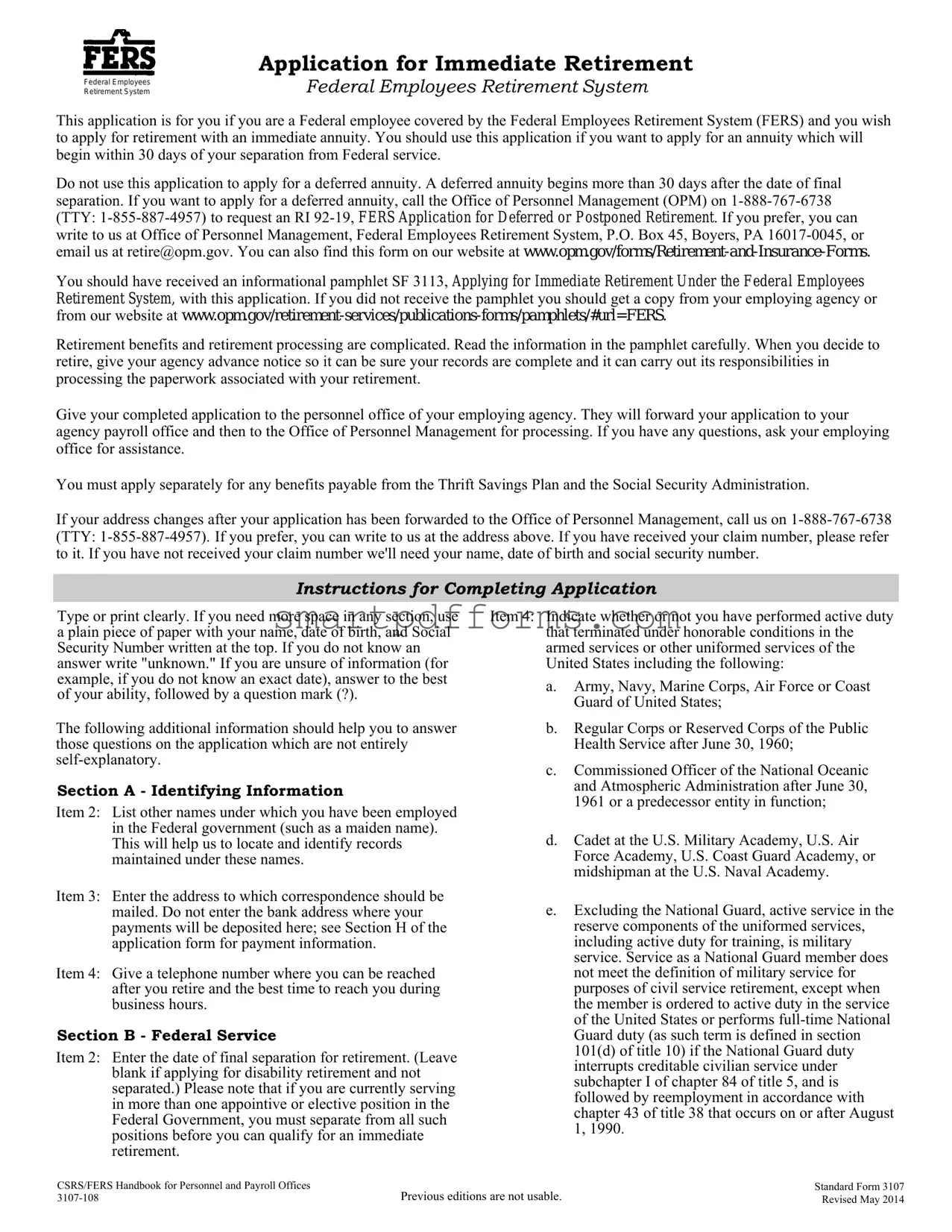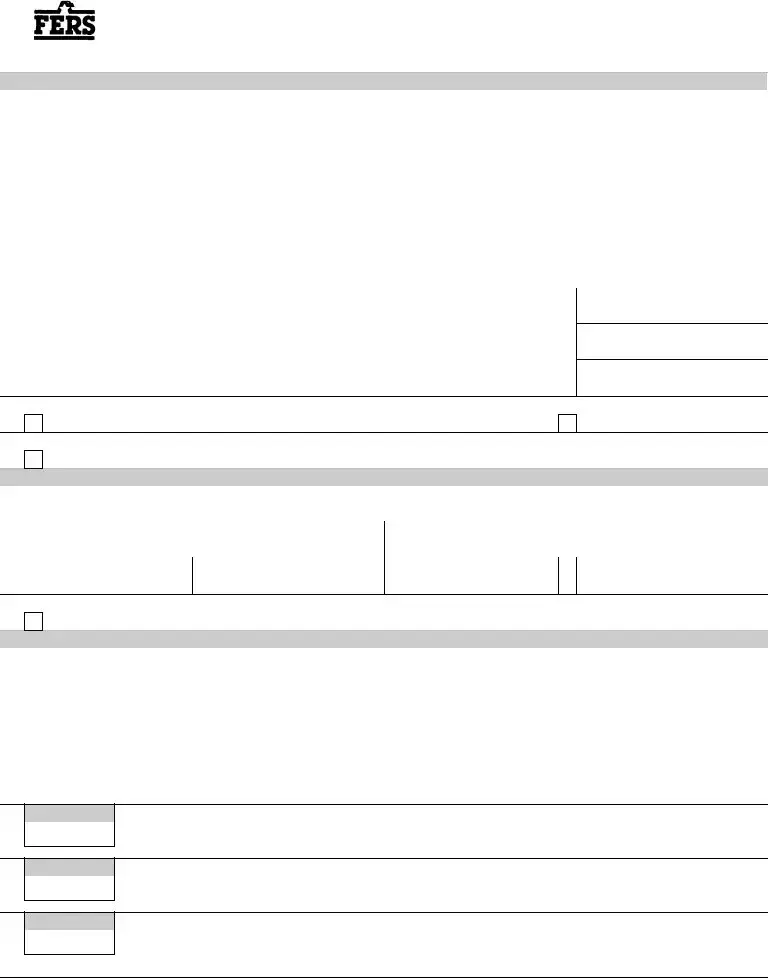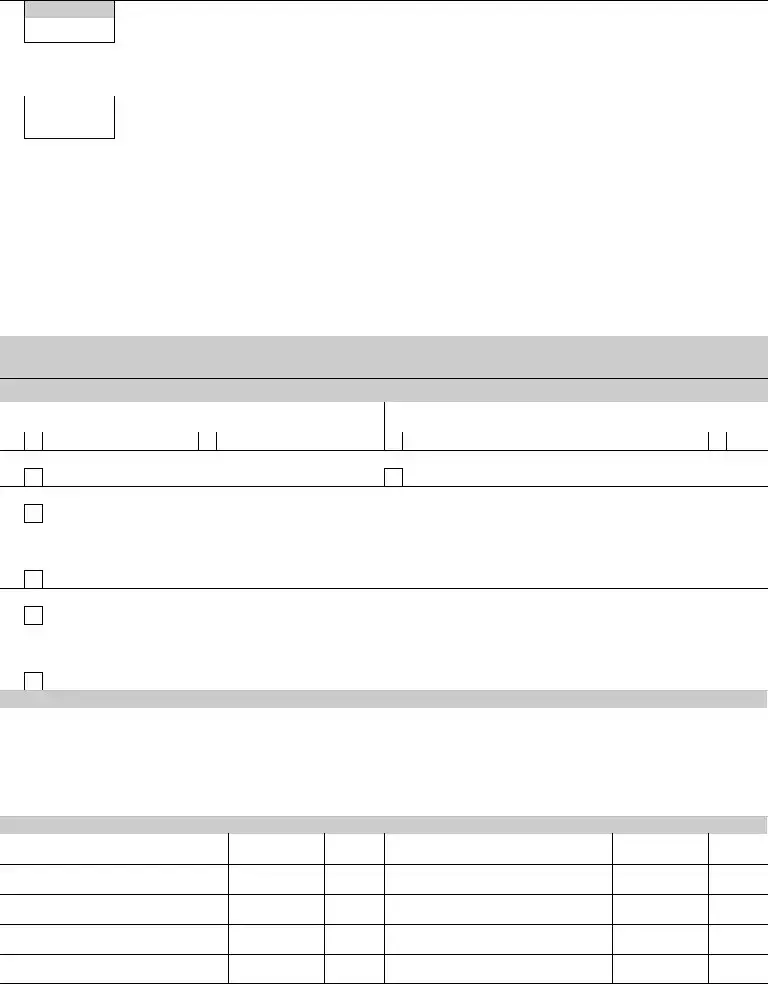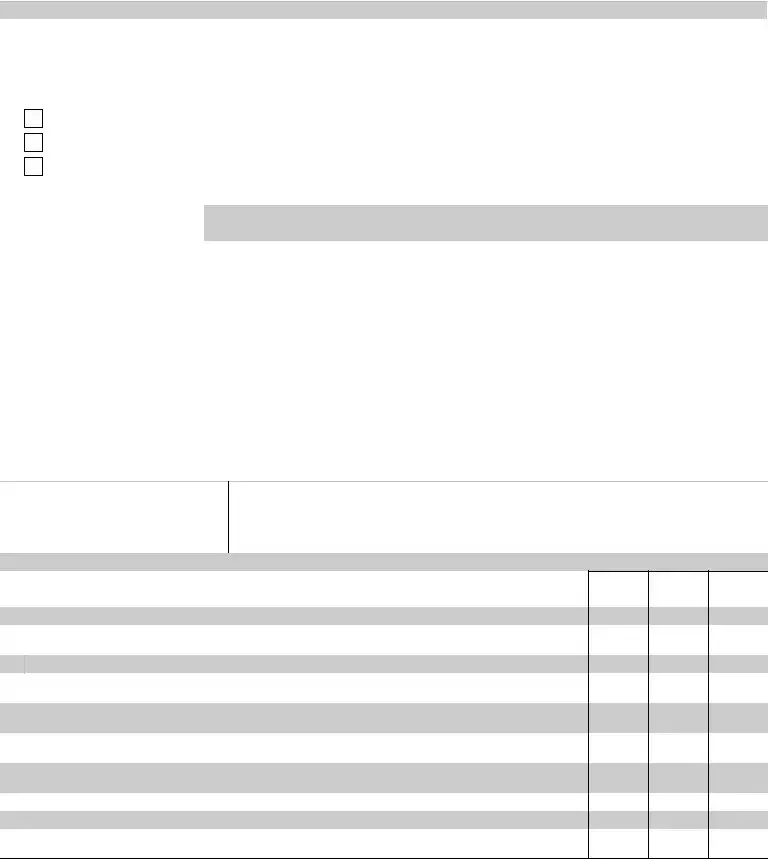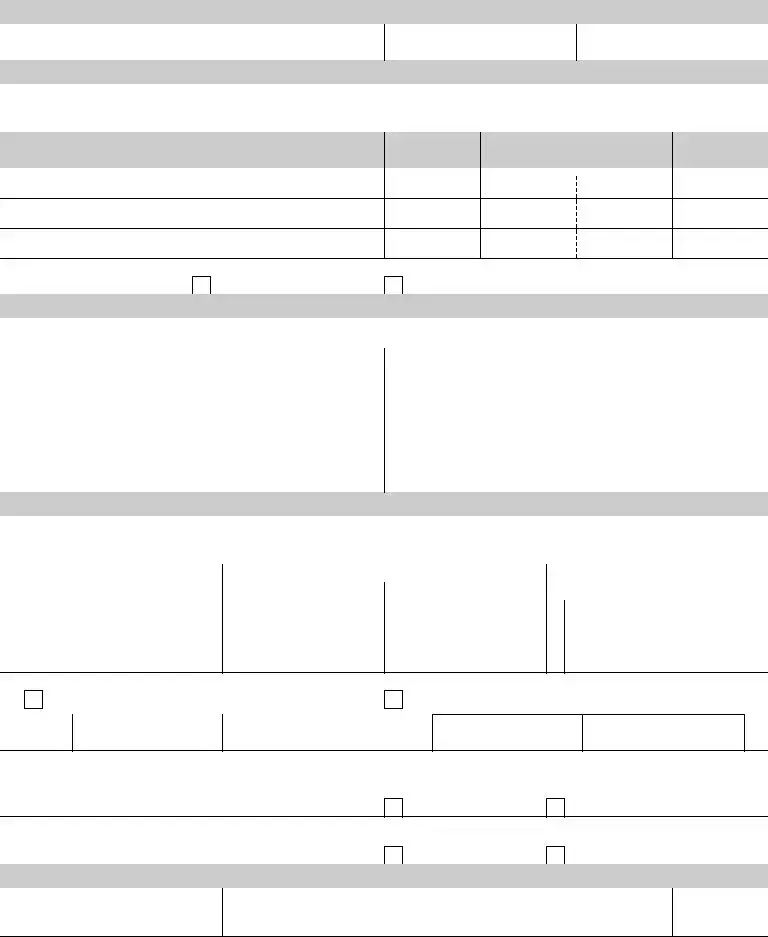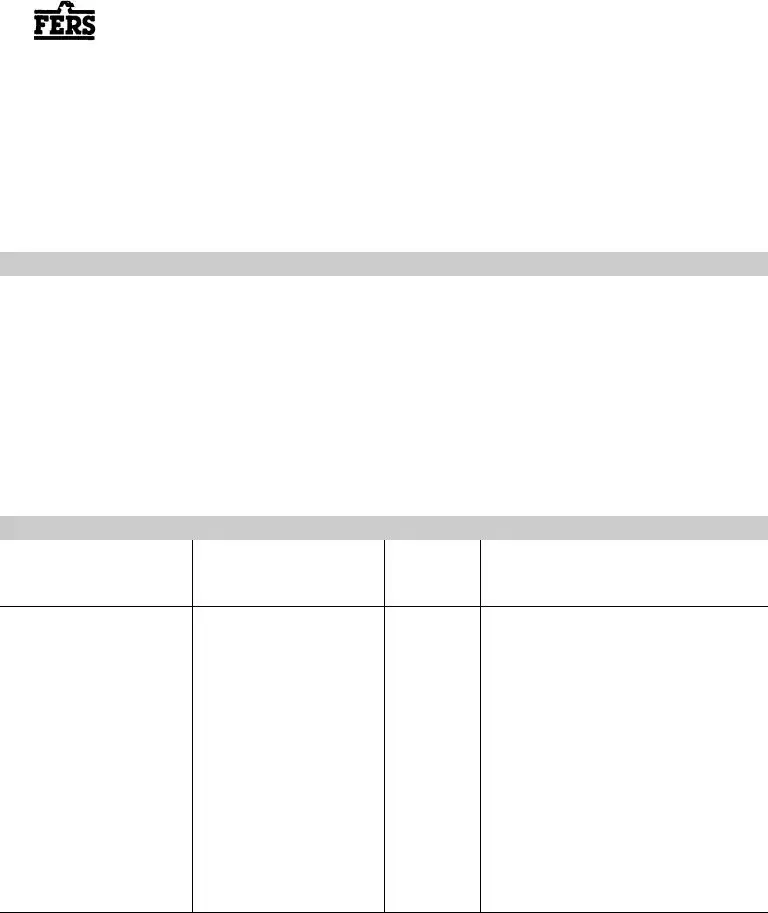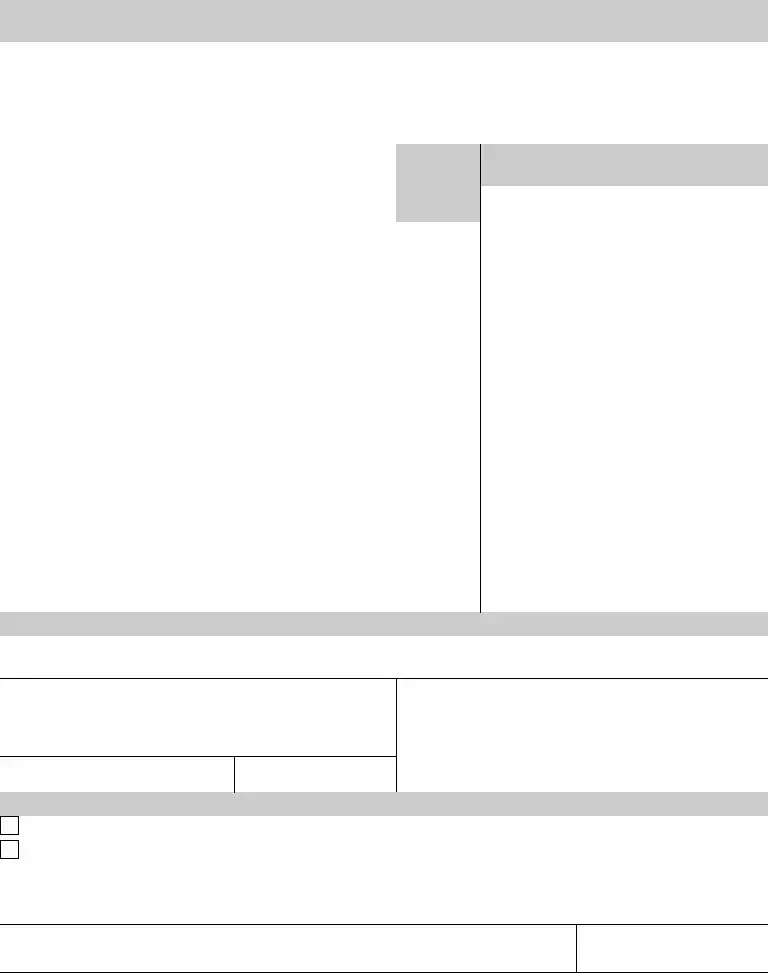|
Please note that, in accordance with the law, both a survivor |
You may elect to provide a survivor annuity for more |
|
annuity election made at retirement and a survivor annuity |
than one former spouse. The total of the survivor |
|
election made before a divorce, terminate upon death or |
annuities must equal either 25% or 50% of your |
|
divorce and the annuitant must make a new election (reelection) |
unreduced annuity. |
|
within 2 years after the terminating event to provide a survivor |
If you are married, you must have your spouse's consent |
|
annuity for a spouse acquired after retirement or for a former |
|
spouse. Continuing a survivor reduction, by itself, is not |
to choose this option, because any benefit elected for a |
|
effective to reelect a survivor annuity for a spouse married after |
former spouse limits what can be elected for your |
|
retirement or for a former spouse. |
|
|
current spouse. (Complete and attach SF 3107-2, |
|
Box 4: If you initial Box 4, a person selected by you, |
Spouse's Consent to Survivor Election, to your |
|
application.) The maximum combined survivor benefits |
|
|
who has an insurable interest in you, will receive |
|
|
that can be elected for your current and former spouse(s) |
|
|
a survivor annuity upon your death. Insurable |
|
|
is 50% of your benefit. |
|
|
interest exists if the person named may reasonably |
|
|
|
|
|
expect to derive financial benefit from your |
Section E - Insurance Information |
|
|
continued life. A disabled child or a former |
|
|
Item 1b: Indicate whether there is a court order or |
|
|
spouse are persons who might have an insurable |
|
|
interest in you. |
|
|
administrative order currently in effect that |
|
|
If you choose an insurable interest survivor |
requires you to provide health benefits coverage |
|
|
for your child(ren). If you answer "yes", you must |
|
|
annuity, the survivor annuity will be 55 percent of |
submit a copy of the court order or administrative |
|
|
your annuity after your annuity has been reduced |
order. |
|
|
to provide this benefit. The table below shows the |
|
|
|
reduction percentages. |
|
|
Section F - Other Claim Information |
|
|
Any employee who is not retiring for disability |
|
|
Item 1: If you have applied for, or have ever received, workers' |
|
|
and who can prove good health may elect a |
|
|
compensation from the Office of Workers' |
|
|
reduced annuity to provide a survivor annuity for |
|
|
Compensation Programs, U.S. Department of Labor, |
|
|
a person having an insurable interest in the |
|
|
because of a job-related illness or injury, check the |
|
|
retiree. |
|
|
|
|
|
|
"yes" box and complete Schedule C. |
|
|
|
|
|
|
|
You may elect this insurable interest survivor annuity |
In Schedule C you should provide the following |
|
|
in addition to a regular survivor annuity for a current or |
|
|
information: |
|
|
former spouse. If you elect an insurable interest annuity |
|
|
|
|
|
for your current spouse, you must both jointly waive |
1. If you are receiving or have received |
|
|
the current spouse annuity. Generally, an insurable |
compensation, enter your compensation claim |
|
|
interest annuity cannot be cancelled. However, if you |
number(s), the beginning and ending dates of each |
|
|
elect an insurable interest annuity for your current |
period for which compensation was paid, and |
|
|
spouse because a former spouse is entitled to the |
whether the benefits were a scheduled award, |
|
|
regular survivor annuity (under a court order acceptable |
disability or other type of compensation. |
|
|
for processing or based on your election of that |
2. If you have applied for, but are not receiving |
|
|
survivor benefit for the former spouse), you can |
|
|
convert the insurable interest election for your current |
benefits, indicate whether your claim is pending |
|
|
spouse to a current spouse annuity within two (2) years |
or has been denied and the claim numbers |
|
|
of the former spouse losing entitlement to the regular |
applicable. |
|
|
survivor annuity. |
|
|
3. Indicate whether you agree to notify us if the |
|
|
If you choose an insurable interest annuity, the amount |
|
|
status of your workers' compensation claim |
|
|
of the reduction in your annuity will depend upon the |
changes and whether or not you authorize the |
|
|
difference between your age and the age of the person |
Office of Personnel Management and/or the |
|
|
named as survivor annuitant, as shown in the table |
Office of Workers' Compensation Programs to |
|
|
below. |
|
|
collect any overpayment if we find that you |
|
|
Age of the Person Named |
Reduction |
|
were paid, but not eligible for, both compensation |
|
|
in Relation to That of |
in Annuity |
|
and annuity benefits covering the same period of |
|
|
|
time. Without this authorization from you, we |
|
|
Retiring Employee |
of Retiring |
|
|
|
|
will not pay your annuity until we can confirm |
|
|
|
Employee |
|
|
|
|
|
that OWCP is not paying you compensation. |
|
|
Older, same age, or less than 5 years younger |
10% |
|
The information requested regarding benefits from |
|
|
|
|
|
the Office of Workers' Compensation Programs is |
|
|
5 but less than 10 years younger |
15% |
|
|
|
|
needed because the law prohibits the dual compen- |
|
|
10 but less than 15 years younger |
20% |
|
sation which would exist if you received both a |
|
|
|
FERS annuity and compensation for total or partial |
|
|
|
|
|
|
|
|
|
|
disability under the Federal Employees' Compen- |
|
|
15 but less than 20 years younger |
25% |
|
|
|
|
|
|
sation Act. |
|
|
20 but less than 25 years younger |
30% |
|
|
|
|
Section G - Information About Children |
|
|
|
|
|
|
|
25 but less than 30 years younger |
35% |
|
|
|
|
Complete Section G by providing the names and dates of birth |
|
|
|
|
|
|
|
30 or more years younger |
40% |
|
of your unmarried dependent children under the age of 22. Also |
|
|
|
|
|
list any child who is over age 22 and incapable of self-support |
|
Box 5: If you initial box 5, your former spouse(s) will receive a |
because of mental or physical disability incurred before age 18. |
|
Check the box headed "disabled" by the name of each child to |
|
|
survivor annuity upon your death. The maximum |
|
|
whom this applies. Information about your children in your |
|
|
survivor annuity payable to your former spouse(s) is |
|
|
annuity claim file may help to expedite the processing of claims |
|
|
50% of your unreduced annuity. Your annuity will be |
|
|
for survivor benefits in the event of your death. |
|
|
reduced 5% or 10% according to the total benefit you |
|
|
|
|
|
want to provide. |
3 |
Standard Form 3107 |
|
|
|
Revised May 2014 |
